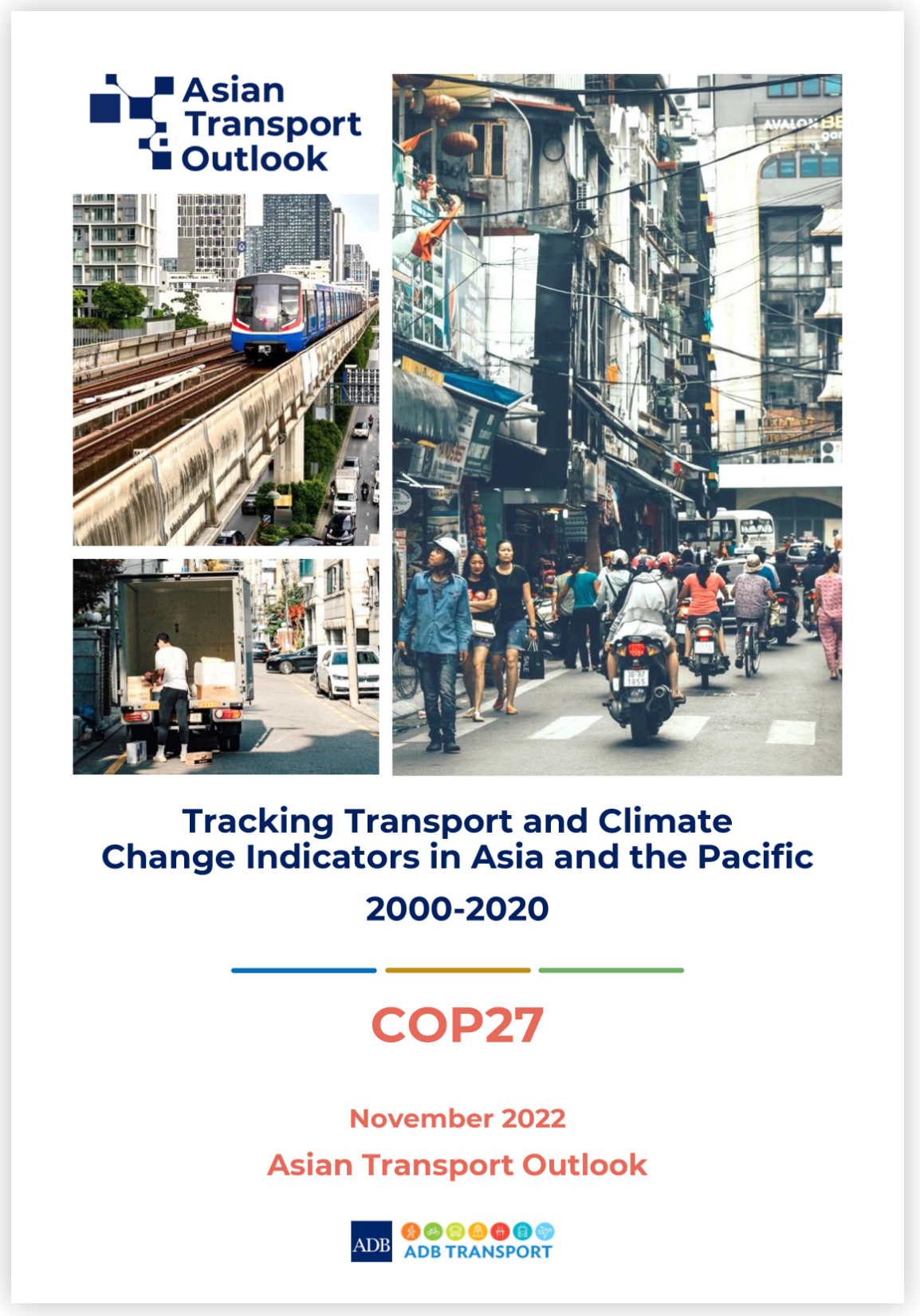Tracking Transport and Climate Change Indicators in Asia and the Pacific 2000-2020
This overview of transport and climate change in Asia and the Pacific was developed by the Asian Transport Outlook team as an input into the 27th Conference of Parties (COP27) to the United Nations Convention on Climate Change (UNFCCC). The overview is set up as a tracker which compares recent years, generally 2015-2020/1, and earlier periods, either 2000-2015 or 2010-2015. The overview tracks the status of: (a) transport-related CO2 emissions, (b) vehicles, (c) transport infrastructure, including transport infrastructure investments, (d) passenger and freight activity, (e) energy used by the transport sector, and (f) selected policy indicators relevant to the topic of transport and climate change.
The overview supports earlier analysis by the Asian Transport Outlook that it is no longer appropriate to lable the the transport sector in Asia as ‘hard to decarbonise’. The Asia and Pacific region is making progress in the decarbonization of the transport sector which has already resulted in a considerable decline in the annual growth rate of transport CO2 emissions. Furthermore, recent baseline estimates also show considerable lower growth potential than historical estimates. An area of continuing concern is that also these recent BAU scenario’s are still considerably far away from what would be required from the transport sector to be in alignment with the 1.5 Degree target set out in the Paris Agreement in Climate Change.
The improved outlook for transport CO2 emissions is largely due to improvements in the carbon intensity of both passenger and freight transport. This intensity has come down because of continued improvements in fuel efficiency and a modest increase in non-oil fuels. At the same time there is a modest impact of slowing growth in ownership of passenger vehicles as well as in passenger and freight activity.
There is an increase in rapid urban transit (metro, LRT and BRT). However, this increase is cancelled by an increasing low growth in the number of busses and the share of bus passengers.
It can be expected that the outlook for transport CO2 emissions will further improve as the electrification of transport takes off further. Some countries and some transport sub-sectors in Asia are already leading in electrifying transport.
Governments in Asia and the Pacific are taking policy measures to address transport and climate change. However, the overall scope of policy action is still relatively modest, with notable exceptions across the region for fuel economy and fuel subsidies as well as a considerable number of national examples (e.g. on electrification or modal shift). Recent policy documents, however, do not represent a substantial increase in the number of targets, nor in the ambition levels of most of these targets, to reduce CO2 emissions in the transport sector.
This first tracker of the climate change dimension of the transport sector in Asia makes active use of the information contained in the Asian Transport Outlook, an initiative by the Asian Development Bank to build the knowledge base on transport in Asia and the Pacific.
Download the PowerPoint version Download the Report
